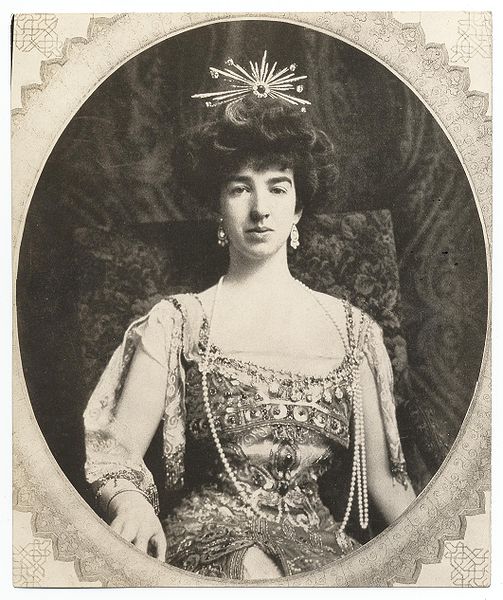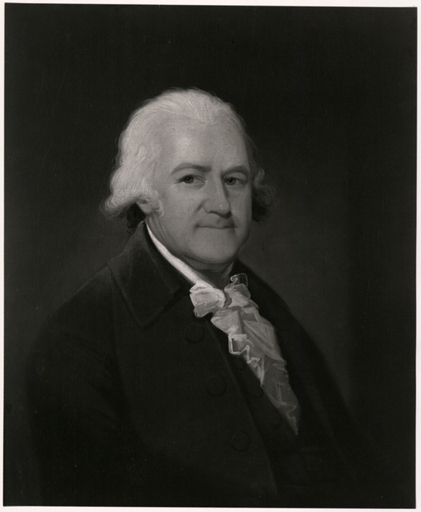Sociologists attest that acquired status naturally tends to diffuse itself, beginning with the family. By virtue of the family’s organic structure, when one of its members acquires a distinguished status through his merit, family members participate in this status, thereby making it part of the family patrimony. In this way, social status naturally tends to become hereditary.
“What is entirely neglected is the hereditary character of status,” notes Prof. Egon Ernest Bergel in a study on social stratification. “Even in our extremely mobile system ascribed, that is, inherited, status is the rule, achieved status the exception.”1
Bierstedt also comments on this point.

William Collins Whitney became an extremely wealthy businessman who made the Whitney name synonymous with thoroughbred horse racing in the United States. Whitney-owned horses have won every major race in the US including multiple wins at the Kentucky Derby, the Preakness Stakes, and the Belmont Stakes. He served as Secretary of the Navy in the first Cleveland administration.
“Societies regard the unity of the family as a matter of extreme importance, since societal survival depends, to some degree at least, upon a family system…. To wives is ascribed the status of their husbands, to children the status of their parents. In this way the stratification of statuses comes to be a family and, therefore, a group phenomenon. Later on this status ascribed to the family becomes hereditary.”2
Social anthropologist Ralph Linton makes the same claim.
“Even when the social divisions originate in individual differences of ability, there seems to be a strong tendency for such divisions to become hereditary. The members of a socially favored division try to transmit the advantages they have gained to their offspring…. In many cases these tendencies result in the organization of the society into a series of hereditary classes or castes. Such hereditary units are always used as reference points for the ascription of status.”3

Gertrude Vanderbilt Whitney, art patron and collector, founder of the Whitney Museum of American Art in New York City, and a prominent social figure and hostess, who was born into the United States Vanderbilt family and married into the Whitney family.
When this transmission of status occurs within family lineages of the upper class, they begin to constitute—despite the democratic framework of the State—the foundation for a true aristocracy, as Lipset and Bendix observe.
“Men and women occupying positions of high status generally endeavor to preserve their privileges for their kin and heirs; indeed, a ‘good’ father is one who tries to pass the status he enjoys on to his children, and in many societies he will try to extend it to near and distant relatives as well. Hence, in every stratified, complex society there is, as Plato suggested, a straining toward aristocracy and a limitation of mobility.”4
According to Nathaniel Burt, the transmission of merit is hereditary. This establishes the prestige of a family, and confers on American society a vibrant past and a present permeated with good manners and tradition. These are elements, he affirms, not of a democracy, but of an aristocracy.5
The formation of such an aristocracy is further favored by the natural tendency of families of a similar social level to socialize and marry among themselves. These hereditary groups, made up of persons of the upper class, are in the United States an elite analogous to the European titled nobility. Bierstedt states:
“When class endogamy—that is, marriage within one’s own stratum—is encouraged and customarily practiced, class status can be perpetuated over relatively long periods. In some societies it is symbolized by titles of rank and perpetuated by a hereditary nobility. The importance of family or kin as a criterion of class is not the same in all societies, but it is a criterion that plays some part in the total picture. In the United States, for example, one need only mention the Adams and the Lowell families in Massachusetts and the Byrd and the Randolph families in Virginia.”6

John A. Lowell, considered to be the patriarch of the Boston Lowells, was an American lawyer, selectman, jurist, delegate to the Congress of the Confederation and federal judge.
Let us conclude with Martin Stansfeld, who does not hesitate to speak of an aristocracy in the United States.
“Some people think American aristocracy died out two hundred years ago when inherited titles were banned by the Constitution, but that is definitely not so. There are no inherited American titles, but aristocracy in every other sense—people of substance, education, influence and wealth—goes all the way back to the George Washingtons and the Thomas Jeffersons. It is very much alive and growing in this country today.”7
Plinio Corrêa de Oliveira, Nobility and Analogous Traditional Elites in the Allocutions of Pius XII: A Theme Illuminating American Social History (York, Penn.: The American Society for the Defense of Tradition, Family, and Property, 1993), Appendix I, pp. 176-177.
1 Egon Ernest Bergel, Social Stratification (New York: McGraw-Hill, 1962), p. 265.
2 Robert Bierstedt, The Social Order, 4th ed. (New York: McGraw-Hill, 1974), pp. 453-454. An example of this is the transmission of position from father to son in the industrial and commercial sectors. Sociologists have noted that in a majority of cases, businesses are passed from father to son, thus establishing a family continuity. Cf. also Robin Williams, American Society, p. 117.
3 Ralph Linton, The Study of Man, student’s ed. (New York: Appleton-Century-Crofts [1936] 1964), pp. 126-127.
4 Seymour Martin Lipset and Reinhard Bendix, Social Mobility in Industrial Society (New York: Random House, 1963), p. 2.
5 Cf. Nathaniel Burt, First Families: The Making of American Aristocracy (Boston: Little, Brown & Co., 1970), p. 431.
6 Robert Bierstedt, The Social Order, 4th ed. (New York: McGraw-Hill, 1974), pp. 469-470.
7 Martin Stansfeld, “American Aristocracy is Very Much Alive and Growing,” U.S. News and World Report, Dec. 12, 1983, p. 64.

Rank and authority as a source of social status in America.
Clubs and associations as a source of social status in America.
Education as a source of social status in America.
Lineage as a source of social status in America.
Status in American Society: Its Concept and Sources.










